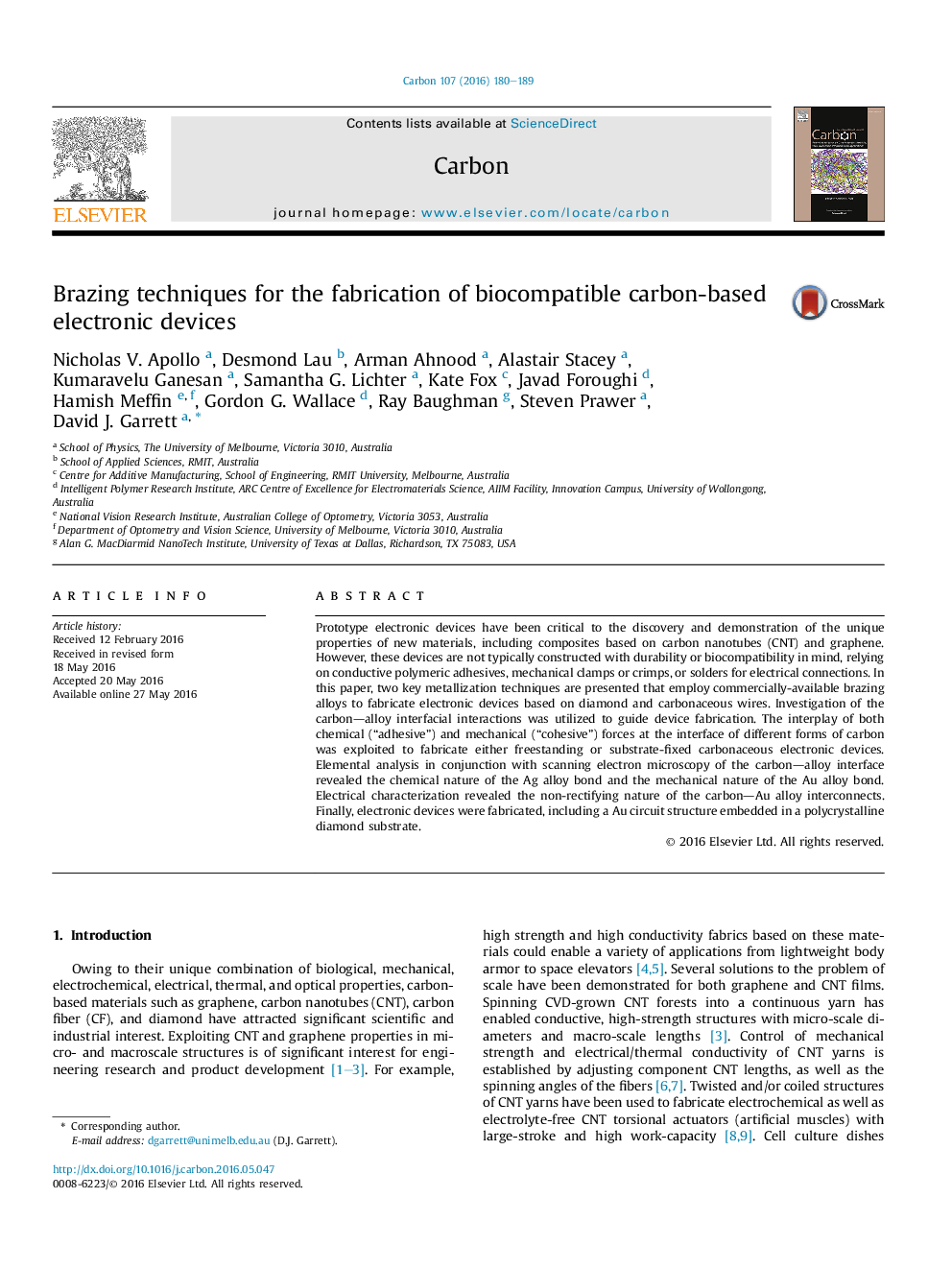| Article ID | Journal | Published Year | Pages | File Type |
|---|---|---|---|---|
| 1413093 | Carbon | 2016 | 10 Pages |
Prototype electronic devices have been critical to the discovery and demonstration of the unique properties of new materials, including composites based on carbon nanotubes (CNT) and graphene. However, these devices are not typically constructed with durability or biocompatibility in mind, relying on conductive polymeric adhesives, mechanical clamps or crimps, or solders for electrical connections. In this paper, two key metallization techniques are presented that employ commercially-available brazing alloys to fabricate electronic devices based on diamond and carbonaceous wires. Investigation of the carbon—alloy interfacial interactions was utilized to guide device fabrication. The interplay of both chemical (“adhesive”) and mechanical (“cohesive”) forces at the interface of different forms of carbon was exploited to fabricate either freestanding or substrate-fixed carbonaceous electronic devices. Elemental analysis in conjunction with scanning electron microscopy of the carbon—alloy interface revealed the chemical nature of the Ag alloy bond and the mechanical nature of the Au alloy bond. Electrical characterization revealed the non-rectifying nature of the carbon—Au alloy interconnects. Finally, electronic devices were fabricated, including a Au circuit structure embedded in a polycrystalline diamond substrate.
